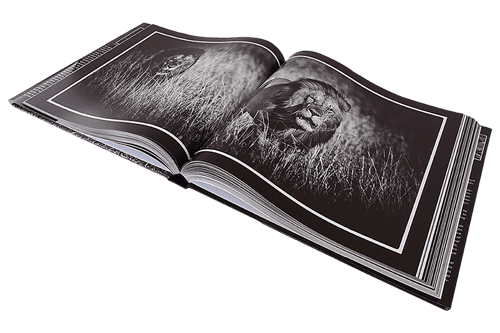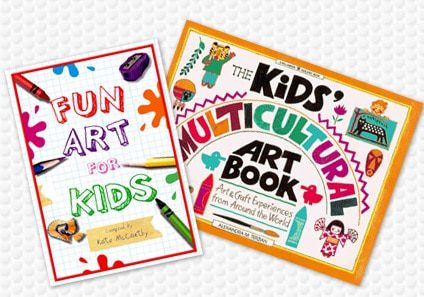Discover the Vital Guide to Art Book Printing for Aspiring Artists and Publishers
As a hopeful artist or author, understanding the nuances of art book printing is crucial to bringing your vision to life. What are the key components you should concentrate on to produce a sensational art book that absolutely represents your work?
Recognizing Various Kinds Of Art Books
When you plunge into the globe of art books, you'll promptly discover that they come in different types, each tailored to various imaginative expressions and target markets. Coffee table books frequently showcase stunning visuals, perfect for laid-back surfing, while essays dive deep right into an individual musician's work, supplying context and understandings. If you're interested in details art activities, exhibition catalogs use in-depth paperwork of shows, including essays and reviews.
For training objectives, art guidebooks and method publications lead you via various mediums and designs, making them important for aspiring musicians. Each format offers its objective, and knowing their differences can improve your art book journey.
Choosing the Right Paper and Products
Selecting the best paper and materials can greatly influence the overall high quality and feel of your art book. Begin by considering the kind of artwork you have. For dynamic colors and complex information, choose a shiny surface or a heavyweight matte paper that improves visual depth. If your work features softer tones or appearances, an all-natural or uncoated paper can give a cozy, inviting touch.
Think of the weight of the paper, also. Thicker options commonly offer an even more professional appearance, while lighter papers can lower printing costs. Do not ignore the binding products; a durable cover can shield your web pages and contribute to guide's visual.
Lastly, consider sustainability. Eco-friendly alternatives are gaining appeal and can show your worths as an artist. By carefully choosing your paper and products, you'll assure that your art book not just looks terrific yet also feels special in the hands of your readers.

Picking the Best Printing Techniques
When it concerns printing your art book, picking in between countered and digital printing can substantially affect your end product. You'll likewise intend to take into consideration how paper top quality affects the total look and feeling of your art work. Let's discover these key printing methods to discover the best fit for your job.
Balanced Out vs. Digital Printing
While both balanced out and electronic printing have their advantages, choosing the best technique for your art book can greatly impact the final product. Balanced out printing provides premium pictures and vibrant shades, making it suitable for bigger print runs. Ultimately, your option ought to straighten with your imaginative vision and distribution technique, ensuring that your art book reflects the quality you desire.
Paper High Quality Considerations
Selecting the right paper high quality can considerably improve the aesthetic allure and responsive experience of your art book. Start by considering the weight and appearance of the paper. Much heavier paper typically really feels even more elegant and can better display vivid colors and detailed information. For prints, a shiny surface can make images pop, while a matte coating offers a softer, more refined look. Do not fail to remember concerning the paper's brightness; brighter sheets can enhance color accuracy and comparison.
Next, believe concerning the sustainability of your selection. Eco-friendly alternatives are becoming significantly preferred and can appeal to environmentally-conscious readers. Lastly, request examples to see just how various papers work with your art work, guaranteeing the last product shows your vision flawlessly.
Making Sure Color Precision in Your Prints
To accomplish stunning prints, you require to concentrate on shade accuracy from the start. You'll intend to utilize shade calibration methods to confirm your display and printer are in sync. In addition, proofing your job before the final print run can help catch any type of inconsistencies, guaranteeing your art looks equally as you envisioned.
Shade Calibration Methods
Assuring color accuracy in your prints starts with reliable shade calibration strategies that assist maintain consistency between your digital photos and last published items. Next, choose a shade account matched for your printing procedure, like CMYK for print products. By why not try this out constantly using these strategies, you'll improve the overall high quality of your art prints and better convey your artistic vision.
Proofing for Accuracy
While you might believe your electronic images are all set for print, proofing is essential for achieving color precision. Prior to committing to a full print run, always request an evidence from your printer.
If changes are required, connect plainly with your printer regarding your desired outcomes. Don't wait to request multiple proofs if required; it's worth the financial investment to obtain it. Eventually, detailed proofing guarantees that your artwork is stood for as you pictured it, preserving your creative stability throughout the printing process.

Designing Layouts That Enhance Your Artwork
When you develop formats for your art book, it's important to ponder how each component engages with your art work. Go for an equilibrium in between visuals and text, making sure neither overshadows the other. Usage white space strategically; it offers your art work space to take a breath and draws interest to its information.
Take into consideration the circulation of your book. Set up pictures in a way that guides the visitor's eye, creating a story or thematic development. art book. Vary the dimensions and positionings of your artwork to keep the design vibrant and fascinating
Select font styles that complement your artwork without sidetracking from it. Maintain text concise and relevant, supplying context or understanding that improves the viewer's experience.
Finally, test various layouts. Publish samples to see how the designs convert on paper, and adjust as required. By thoughtfully making your formats, you'll develop an aesthetically interesting art book that resonates with your target market.
Binding Options for a Specialist Complete
Choosing the right binding option can greatly impact the overall discussion of your art book. You'll intend to take right into account both aesthetic appeals and sturdiness when making your option. Popular alternatives consist of best binding, which uses a streamlined appearance and is best for thicker books; saddle sewing, suitable for smaller brochures; and spiral binding, which permits pages to lay flat for very easy viewing.
If you're intending for a premium feeling, situation binding is an excellent choice, offering a durable cover and an expert appearance (art book). Don't forget about the cover product; choices like towel, leather, or a glossy finish can boost your book's allure
Whatever alternative you choose, see to it it matches your art work and enhances the visitor's experience. Take your time to weigh the benefits and drawbacks of each method, so your end product reflects the top quality of your innovative vision.
Preparing Your Documents for Publish Preparedness
To ensure your art book is print-ready, you'll need to pay attention to submit preparation. Start by establishing your record dimension to match your preferred print dimensions. Use high-resolution pictures-- 300 DPI is the criterion-- to ascertain sharp, dynamic visuals. Transform your files to CMYK mode, as this color space is ideal for printing. Do not neglect to include bleed locations, typically click here for info an added 0.125 inches around your pages, to avoid any white edges after trimming.
Take into consideration creating a proof to review prior to the final print run. Following these steps will aid you achieve a sleek, professional art book.
Frequently Asked Inquiries
What Is the Typical Price of Printing an Art Book?
The average price of printing an art book differs, however you can anticipate to pay anywhere from $5 to $20 per duplicate, depending on factors like dimension, paper top quality, and printing quantity.
Exactly How Can I Find a Reliable Printing Business?
To discover a trusted printing business, begin by researching on-line evaluations and asking fellow musicians for recommendations. Contrast quotes, inspect portfolios, additional info and connect your requirements plainly to guarantee they recognize your vision and top quality expectations.
What Is the Regular Turnaround Time for Printing?
The typical turnaround time for printing differs but usually ranges from one to four weeks. Variables like project intricacy and quantity can affect this. Always confirm with your selected printer for particular timelines and expectations.
Can I Print My Art Book in Limited Quantities?
Yes, you can most definitely print your art book in restricted quantities. Many printing firms use short-run options, allowing you to generate just the number you need, making it simpler to take care of prices and stock.
What Legal Considerations Should I Know for My Art Book?
You must consider copyright, licensing contracts, and design launches when producing your art book. Make sure you can use all pictures and text, protecting yourself from potential legal problems down the road.